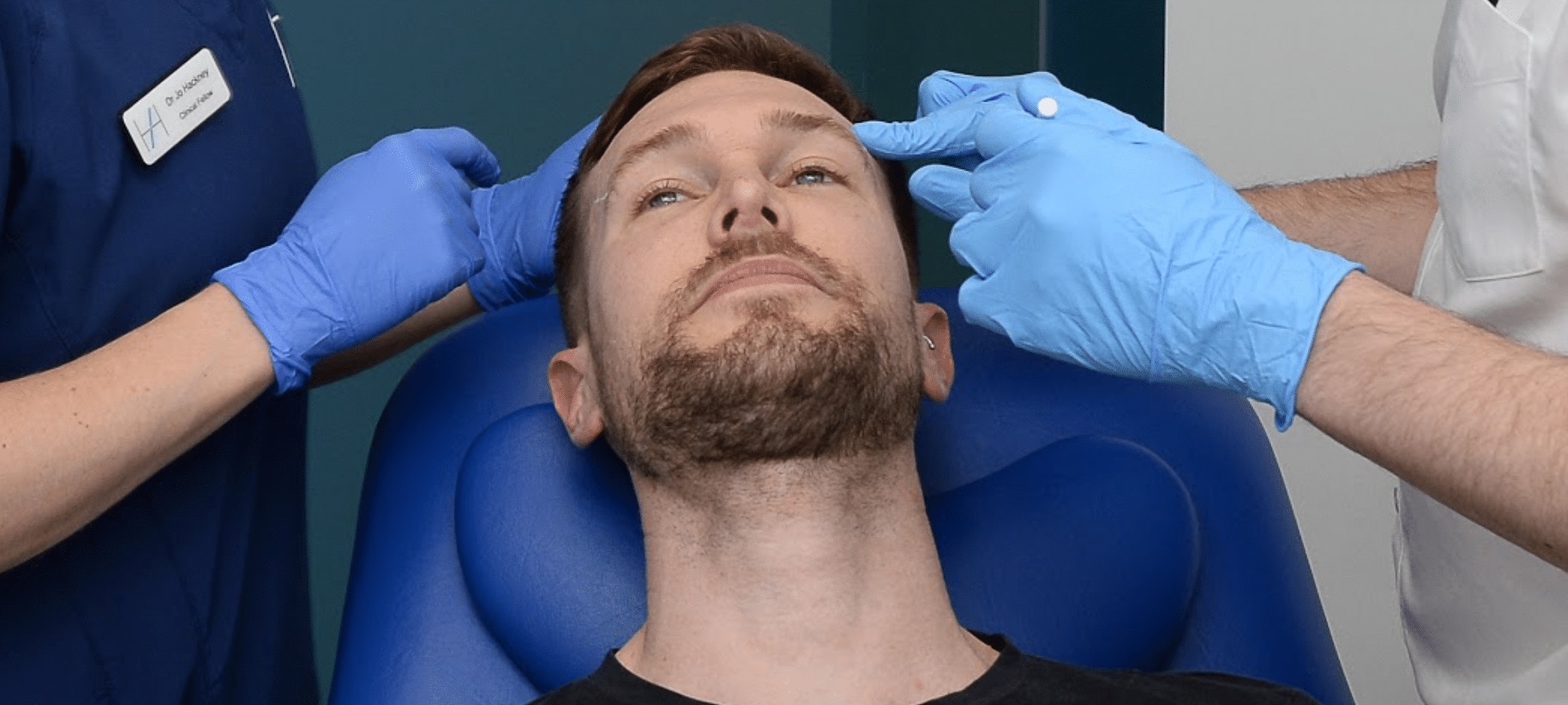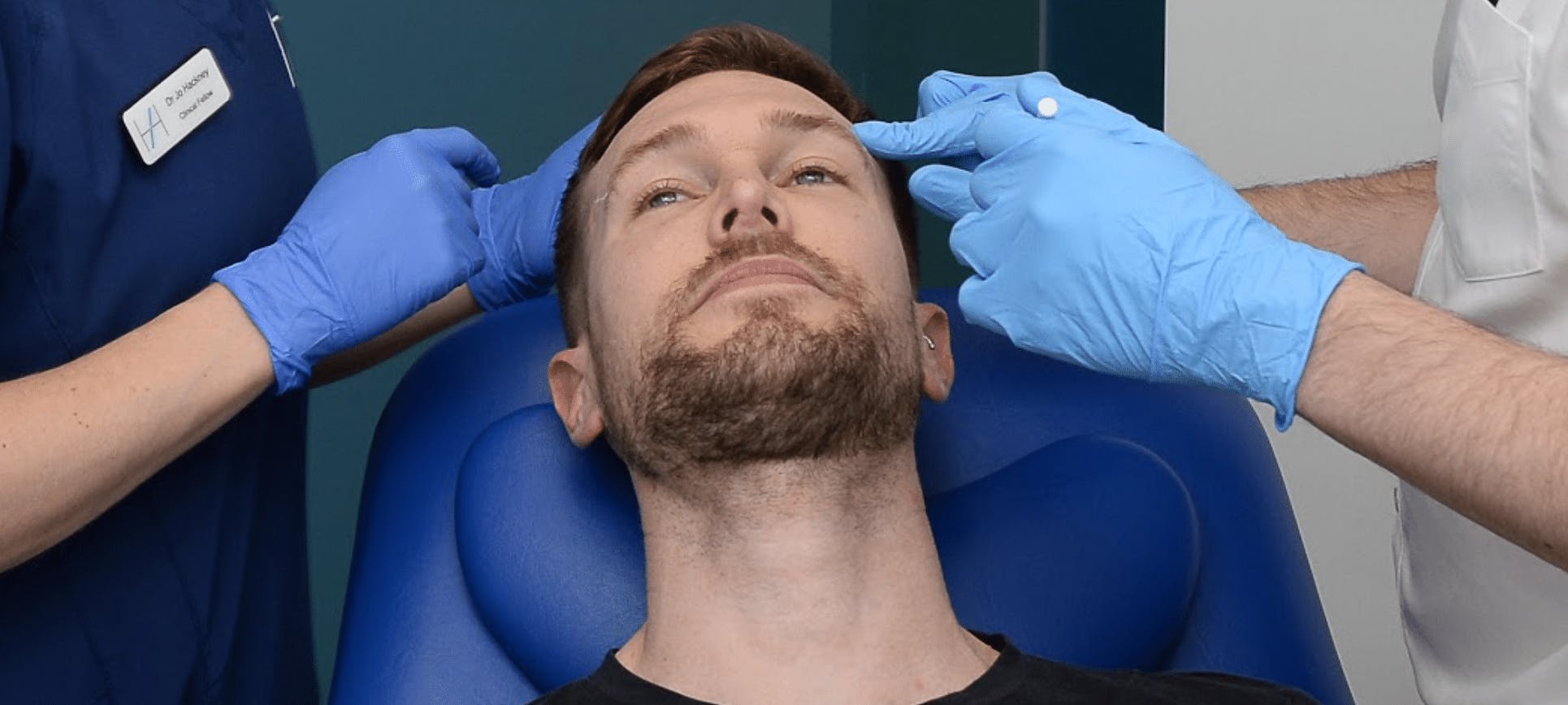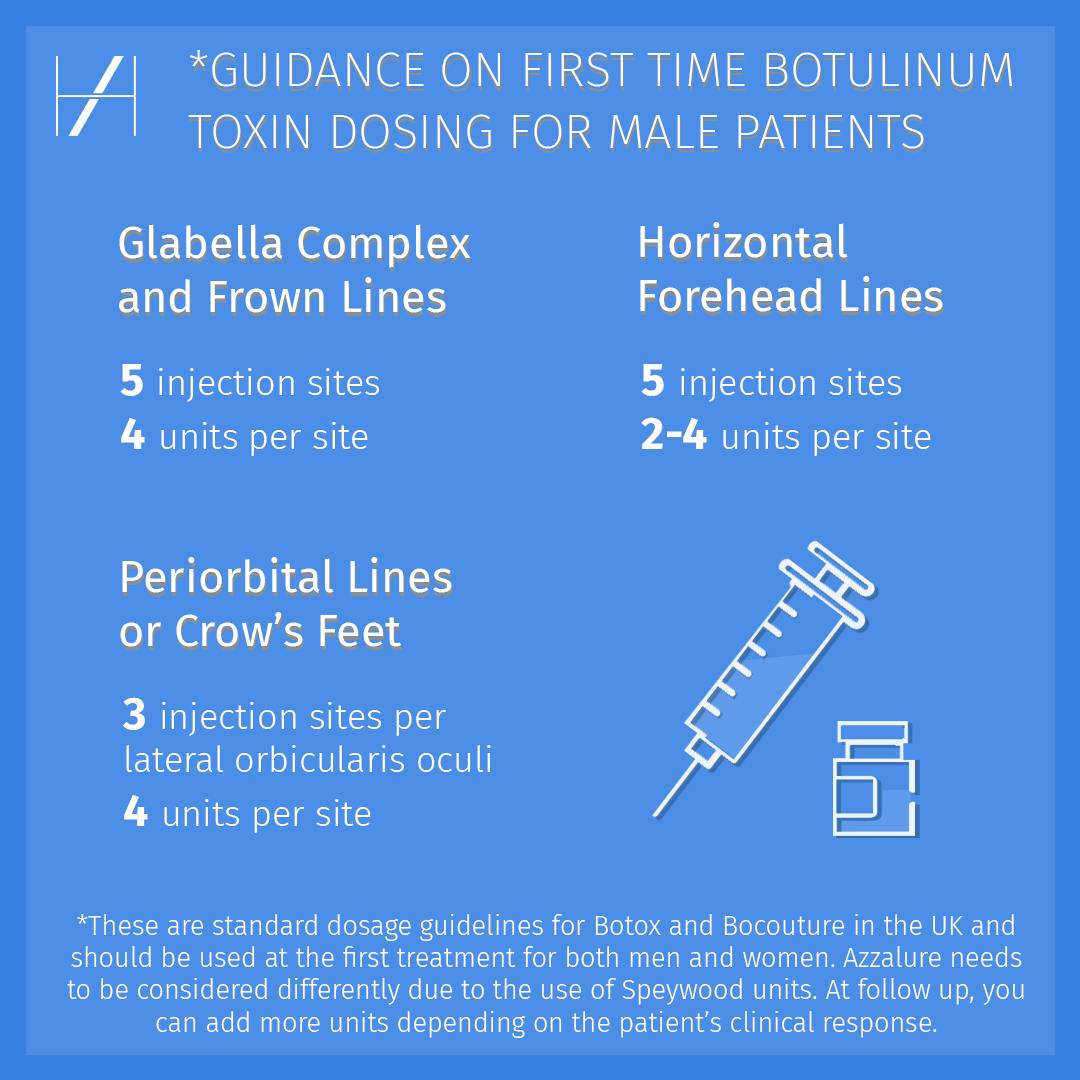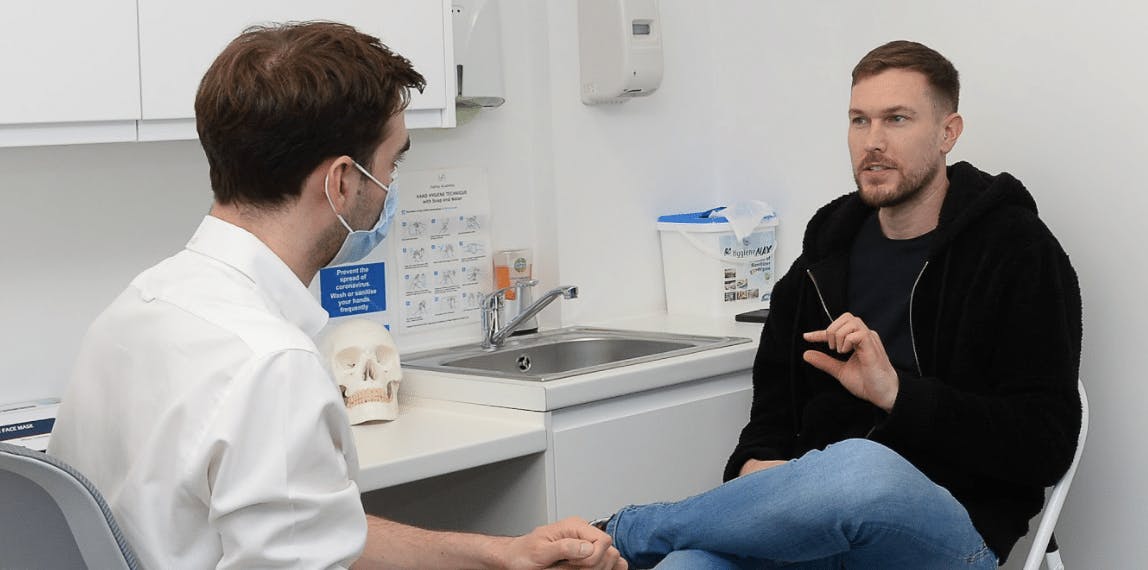Brotox – Administering Botox For Men

The UK media appears to be obsessed with Brotox right now – botox for men, that is.
It’s been covered far and wide, from tabloids including the Daily Mail and Evening Standard to broadsheets such as the Sunday Times and Telegraph. Even the BBC has reported on the rising interest in aesthetics treatments for men.
Anecdotal evidence certainly suggests that more men than ever are seeking aesthetics assistance with anti-ageing. The Academy Clinic, our Harley Academy training clinic, has certainly seen increasing numbers of men having botox and being delighted with the outcome.
A somewhat weathered, “au naturale” male facial appearance has traditionally been considered attractive with it reflecting toughness and endurance. Men are certainly not immune to ageing and can enjoy these treatments for the benefit of their self-confidence in an image-conscious society. But what do injectors need to know about administering botulinum toxin to men? Let us guide you...

Facial anatomy
Anatomy is the foundation for all aesthetic medicine treatments and should be required learning for all injectors. With regard to facial botulinum toxin for men, specifically, it is important to understand the differences between a male face and a female face to avoid inadvertent feminisation. This means paying attention to the overall broad, chiselled, strong traditionally masculine features, as well as specific muscle mass and action.
For example, a male face is likely to have:
- a higher hairline with more lines to manage
- stronger, bulky facial muscles causing dynamic movement and contributing to static lines
- thicker skin
- heavy, lower set brows.
Brotox treatment goals
Brotox treatment goals tend to centre on the upper face and around the eyes, for example the frown area and periorbital lines. The focus is on looking healthy, less angry and well rested.
Expectations are key with toxin treatments. Men do not necessarily want “frozen”, smooth foreheads. They often want lines softened rather than eradicated, for a more natural appearance. Maintenance of sharp features is also key, as toxin treatments may diminish muscle mass in areas where the volume is key for a masculine face.
Amount of toxin required to treat men
The amount of toxin required to treat men will vary depending on the product, the individual muscle mass/distribution and the extent of the lines being treated. The follow-up appointment is particularly important for male patients as it’s likely they will require a top-up at this point, particularly if it is their first treatment with you.
It is generally acknowledged, however, that men will usually require larger doses of toxin than women.
The following guidance outlines how much botulinum toxin is required to treat men in the first instance. This information should be used as a pointer, as individual faces obviously require individual assessment and treatment. There is no “one size fits all” formula and different toxin products will also have their own instructions. Consider what treatments are licensed in the area depending on the product you are using.
*Guidance on first time botulinum toxin dosing for male patients

Apart from considering muscle mass, patterns or dosage of treatment may need altering depending on the desired outcome, for instance:
- to maintain a low set brow by treating the full width of the frontalis adequately
- multiple injection points to cover a longer forehead
- less periorbital treatment to keep some expressional smile lines.
*These are standard dosage guidelines for Botox and Bocouture in the UK and should be used at the first treatment for both men and women. Azzalure needs to be considered differently due to the use of Speywood units. At follow up, you can add more units depending on the clinical response.
Depth of injections
Know your layers! Botox for men is injected at the same depth as it is for women. It is injected directly in the muscle or intradermally at the muscle origin. With the larger muscles it’s usually easier to identify the target of treatment.
Proceed with caution
When treating anyone with botulinum toxin there are certain areas it’s important to be mindful of, as any Level 7 Diploma student can attest! In addition, when it comes to treating men specifically, it is worth noting the points below.
- Outcomes required include maintenance of low set straight eyebrows.
- “Attractive” men can look “mean and moody”, whereas the female look is traditionally more happy and smiling.
- There is less demand from men for “frozen” or expressionless results as this is considered obvious and unnatural-looking.
- You can always add more toxin but you cannot remove it. The standard dosage, well-placed is the best start, particularly with new patients.

Brotox aftercare
As previously mentioned, it’s important to see your patient for a review appointment between two and four weeks after their initial toxin appointment. You may need to treat the areas again at this point, once you have properly assessed their results.
This is especially true of new patients as it’s unlikely you’ll be able to accurately gauge how well the treatment will work for them.
Explain this to your patient from their very first consultation so they know what to expect and are fully prepared. Giving them this information from the outset should prevent any worries about the treatment “not working” afterwards!
Treating male patients
As an aesthetics practitioner, it’s important to be able to treat all kinds of patients and perform a range of treatments well for them. This is to build up your skills and confidence as well as to show a broad variety of experience within injectables to show potential employers.
While you are still completing your Level 7, or having one-to-one training sessions, is the perfect time to treat as many patients of different genders, races and ages as you can. Imagine the first time you treat a male patient is when there is no expert trainer there to guide you – that’s got to be pretty intimidating!
This is why we heartily recommend you make the most of your injectables training by treating a good mix of patients to prepare you for life after Level 7.
All information correct at time of publication
Download our full prospectus
Browse all our injectables, dermal fillers and cosmetic dermatology courses in one document
By submitting this form, you agree to receive marketing about our products, events, promotions and exclusive content. Consent is not a condition of purchase, and no purchase is necessary. Message frequency varies. View our Privacy Policy and Terms & Conditions
Attend our FREE open evening
If you're not sure which course is right for you, let us help
Join us online or in-person at our free open evening to learn more
Our Partners














STAY INFORMED
Sign up to receive industry news, careers advice, special offers and information on Harley Academy courses and services

